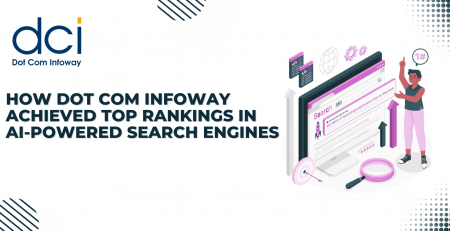What is Google AMP & How it Helps in Improving User Experience
Mobile devices have changed how, when and where we access information, but the speed of delivery can sometimes leave a lot to be desired for many users. Content publishers in particular face the problem of losing readers if a website takes too long to load. This in turn leads to lost subscriptions and lower ad revenue.
In order to address this problem and increase the spread of information, Google has announced a new open source initiative called Accelerated Mobile Pages, or AMP. AMP is designed to dramatically improve loading times for webpages with rich content such as graphics, animations and video, while still displaying smart ads. Google also intends for AMP to work across devices and platforms, in an effort to deliver almost instant information to as many users as possible.
The AMP HTML framework was built using existing web technologies, and it allows websites to develop light-weight webpages. It is currently implemented for Google Search (as showcased in the video below), and in the future AMP will be implemented for other Google services such as Google News, along with almost 30 other publishers worldwide. Among these publishers, you will find several big names including Twitter, Pinterest, WordPress, LinkedIn, Adobe Analytics, Chartbeat and Parse.ly.
https://www.google.com/images/google-blog-assets/amp-phone-10062015.mp4
Google intends to work with its partners on adding features and functionality to three key areas:
Content
Rich content such as images, maps, videos, social plug-ins and data visualizations are becoming a staple for many publishers. On top of that, publishers also have to implement ads and analytics within their content in order to generate revenue, and understand their users better. With AMP, publishers can rely on an open source framework which contains best practices in regards to user experience and high performance.
Distribution
Another hurdle to faster page loading times is distance. As part of the effort to distribute content at very high speeds, Google has offered a caching solution, which allows publishers to host content on their own website, and distribute it globally in a much more efficient manner through Google’s global cache. This cache service will be free to use.
When it comes to ads, Google wants to ensure that publishers can still work with their favorite ad networks, and AMP is intended to support a wide range of ad formats and technologies. The project will also support websites that operate using paywalls and subscriptions. Some ad experiences will undergo changes, and Google intends to work with publishers in order to find the right balance between performance, user experience and maximum ROI on advertising.
Effects on the UX
Under the new AMP policy, UX will benefit from almost instantaneous loading times, with loading times playing a major factor in user retention and bounce rates. The only hypothetical detriment to implementing AMP is the stripping down of a page. However, since rich content gets to stay in, we doubt that it will be that much of an issue for users.















